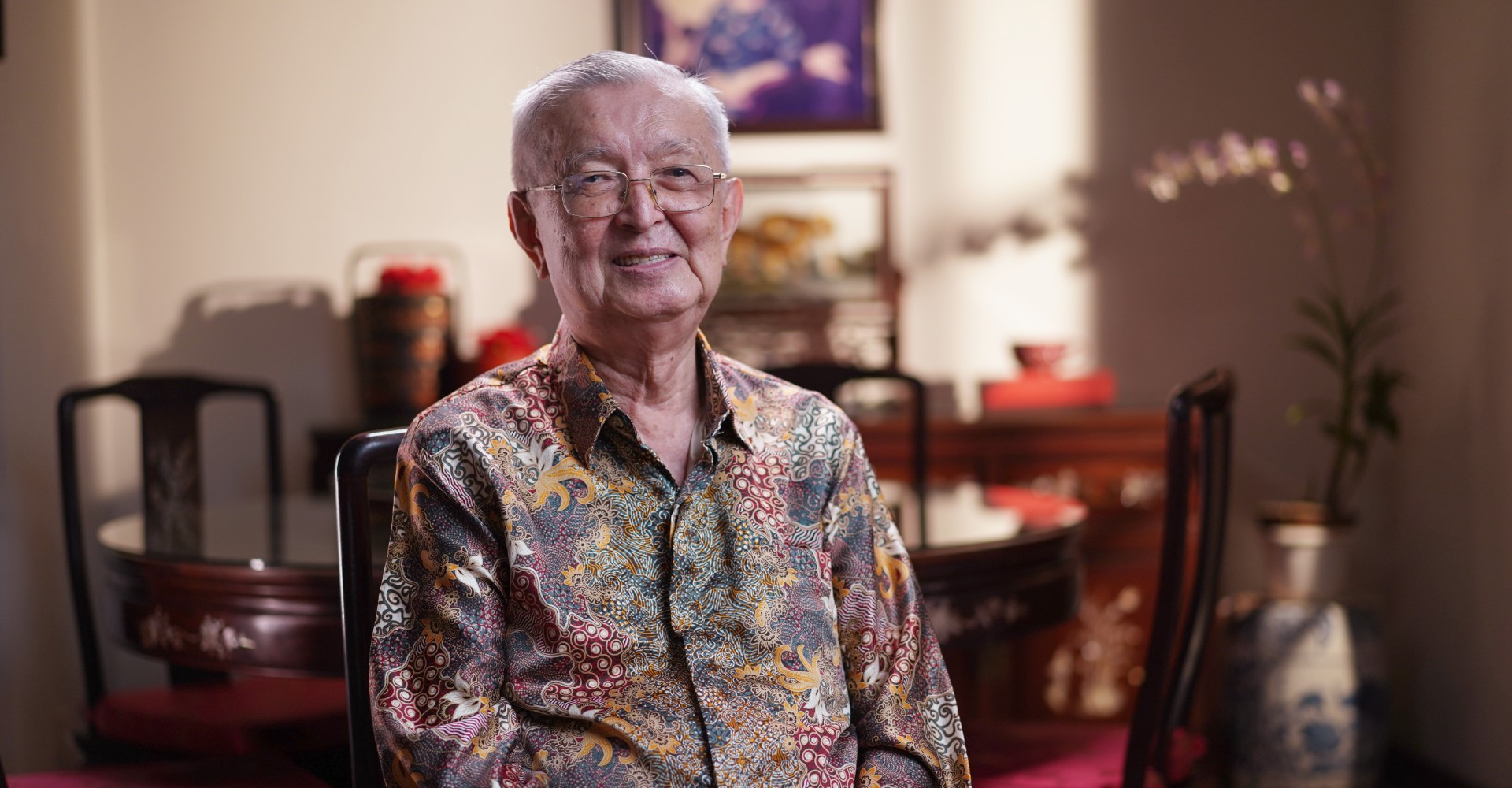When Hoe Peng was a toddler growing up in Penang during the Japanese Occupation, he underwent an operation to remove a large growth at the back of his neck. This operation, which nearly killed Hoe Peng as he was a sickly child, left a large scar.
“My classmates nicknamed me ‘Mr South America’ when they saw the shape of this scar. Somehow, from then on, I paid attention to everything related to this faraway continent—for example, the maps in school. I believe that without doubt, God was always pointing me towards this part of the world. It was His providence that continued to reach out to me. Much later on in the 1960s, while at university, I met a few missionaries-in-training who joined the Bible study sessions in the place where we lived. One of them—Colin Tunbridge, a soft-spoken Kiwi from New Zealand—mentioned that he and another person were headed for South America. On hearing this, I sat straight up, and the word ‘Bolivia’ boomed loud within me! From then on, I set my sights on Bolivia as my mission vision.”
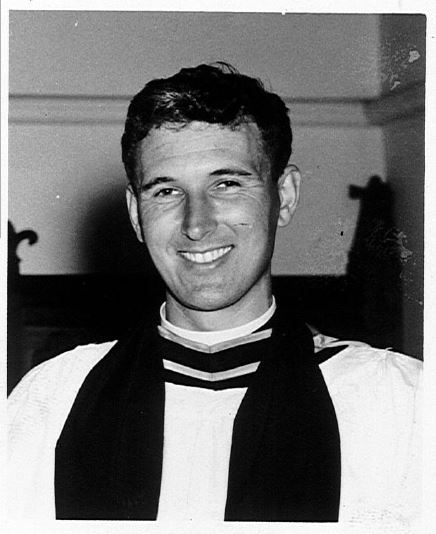
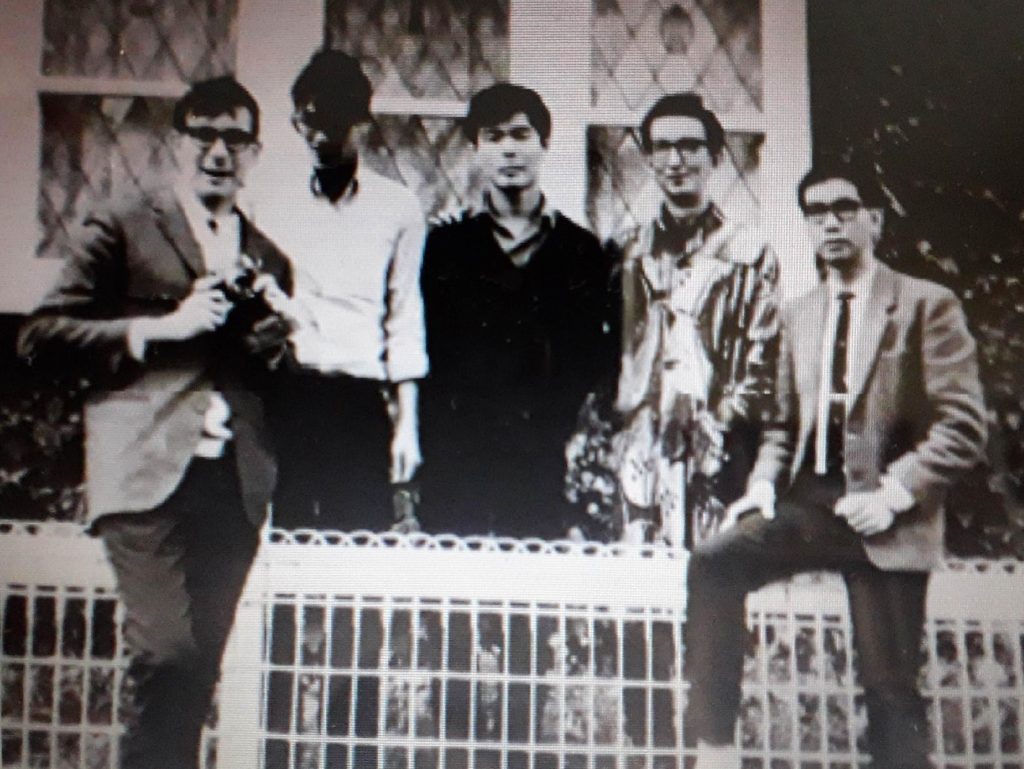
But it would be another 40 years before Bolivia would come to pass, as Hoe Peng was led on a journey of waiting, learning and trusting in the Lord.
After graduation, Hoe Peng came to Singapore. Here, he took up a job as a professional architect, after God opened doors for him. The Lord subsequently led Hoe Peng to serve in leadership roles as an armchair missionary. Yet, what about serving God full-time? It seemed like the timing was still not ripe, especially when the Lohs’ two daughters were growing up. Hoe Peng reflected: “Being a full-time missionary involves a number of factors that include a balance of sensing God, relational commitments at home and opportunities. Ultimately it is His timing.”
By the time Hoe Peng and Alice set foot in Bolivia, they were in their 60s and grandparents thrice over.
Growing up years
Hoe Peng was born in Penang in 1942, the year that marked the start of the Japanese Occupation in Malaya. He was carried to safety to the hills in Ayer Itam where his parents had a house. In a tunnel built into the terraces, the family hid from Japanese soldiers passing through.
“It was by the grace of God we survived,” recalled Hoe Peng, who was the youngest of six children.
Hoe Peng’s father had migrated from Xiamen, China to Penang in the 1890s as a teen. He went to a Hokkien evangelistic rally with the intention of “closing down the show”, but ended up being touched by the Holy Spirit.
Baptised as an infant, Hoe Peng grew up with examples of how his parents lived out their Christian faith. “My mother, an illiterate housewife, would pray for all her six children—often before our meals,” he recalled.
Remembering what his mum and older siblings had told him about his near-death experience from the removal of the growth on his neck, Hoe Peng said: “I believe that God heard my mother’s fervent prayers and plucked me from the jaws of death.”
At home, his father was their spiritual leader. “He ensured that our family knelt in prayer and worshipped for some 20 minutes every evening at 9pm. Prayer was my father’s delight. In the early morning, I would see him praying at the inner courtyard at home,” said Hoe Peng.
The Lord blessed and prospered his father who imported and distributed food staples, and subsequently had a remittance company serving Chinese migrant workers. In turn, his father, a church elder, gave back to the Lord’s Kingdom. For instance, in helping a pastor build up the Penang Chinese Methodist Church spiritually and financially.
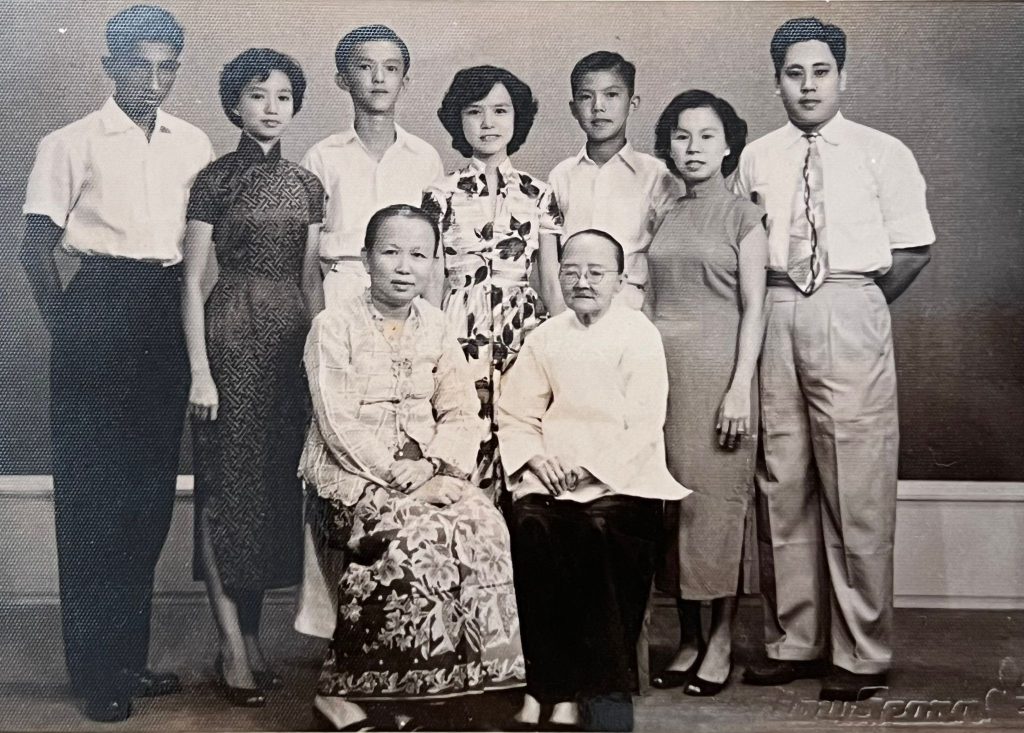
“Faith came through years of watching and learning from my parents. Experiencing God’s provision and protection over my family also shaped my faith and confidence in our Heavenly Father,” said Hoe Peng.
At 16, Hoe Peng said the sinner’s prayer after being moved at an evangelistic meeting at church. “The preacher spoke in such a personal way that I felt God’s love for me and knew that He is the Way, the Truth and the Life. It prompted me to respond in faith,” he explained.
Hoe Peng had been educated in English at the Methodist Boys’ School/Anglo-Chinese School (ACS) in Penang, from Primary One to Form Five. He said: “There was little follow-up following my acceptance of Jesus, and I didn’t grow in the Word. I was also unable to read the Bible in Chinese, even though I learnt memory verses and prayed in Hokkien both at church and at home.”
New Life in Australia And In Christ
Hoe Peng was finally discipled at 17 years old when he went to study in Australia.
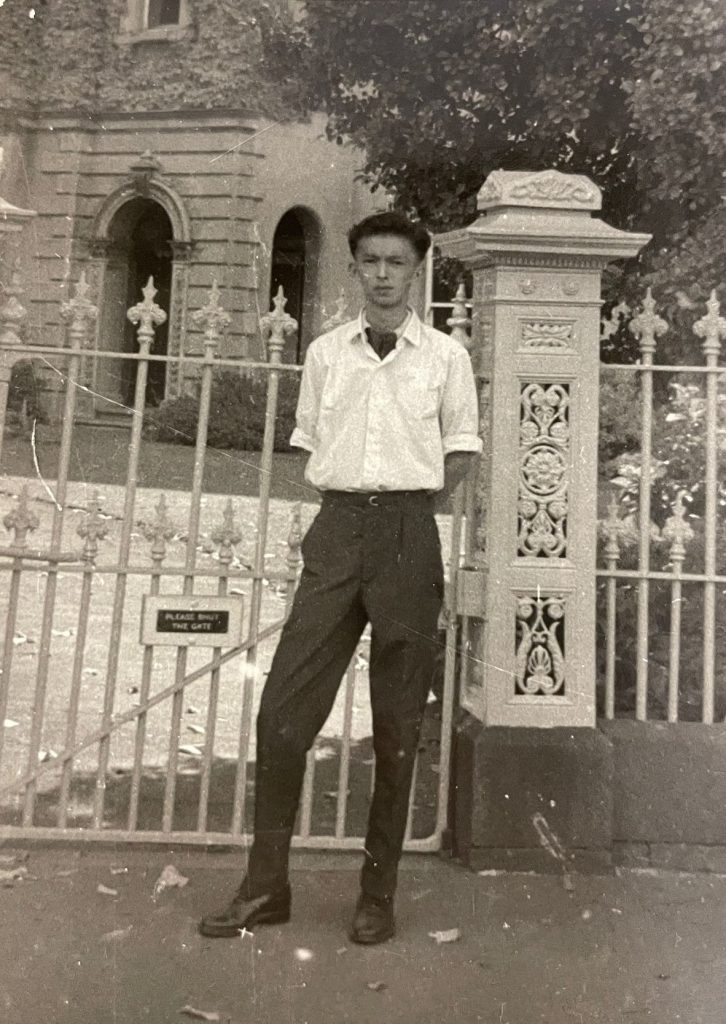
It started with hearing evangelical scholar Dr Leon Morris1 preach about the Gospel of John during an Overseas Christian Fellowship (OCF) meeting. Dr Morris left an impactful impression upon Hoe Peng. He recollects: “Leon Morris had multiple degrees and a PhD, and could read the whole New Testament in Greek. But he had the gift of expressing the most profound things in a simple manner that was easy to understand. He helped me to see that Christianity was different from the common thought of the day: That all religions are the same, leading us to the same God.
“For instance, from my architectural studies, I understood that ancient people built towering religious structures like ziggurats as an expression of their efforts to reach God. But now I was able to see that we are saved because our loving God came down to us in the person of His Son, Jesus Christ, to die for us. That had a great impact on me. It sparked a new beginning in my lifelong journey with Jesus.”
Close friends helped him to understand the Bible and the Lord better, as did books penned by godly men—especially Basic Christianity by John Stott.
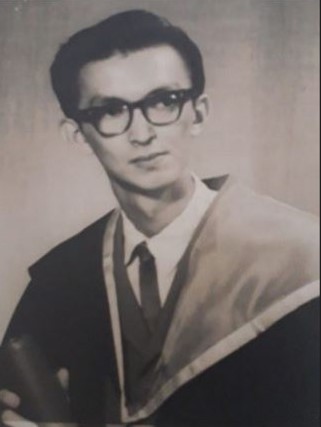
“All these experiences collectively shaped me as a Christian, and I grew gradually in knowing and understanding the faith and my desire to serve the Lord through missions. I also knew I could be faithful because God is always faithful,” said Hoe Peng.
Helping Others to Discover Treasure Under Their Feet
God opened doors for Hoe Peng to show him that missions was not just about going overseas to reach different people groups, but to also reach those He placed around him. It started at the church he attended in Melbourne, where he taught children of Spanish migrants.
“It was not just about wanting others to learn about the Bible or enforcing your beliefs on them. It was also about helping people discover treasure under their feet,” he said, quoting Catholic scholar Henri Nouwen who wrote Gracias!: A Latin American Journal about his travels to Bolivia and Peru.
“The Australian church was also the mission field for us Asian students,” added Hoe Peng.
With four friends from OCF, they started the group M.I. 52 to stir up interest in and prayers for missions in local churches.
“We went to various churches and shared our culture with them through photographs and singing hymns in Chinese. At the same time, we also learnt how the Australians prepared their missionaries for overseas work—helping trainees understand the language and culture of their target fields.
“Our Australian hosts regarded us Asian students as their mission field. They took much effort to encourage us and to meet our needs as counsellors. It was also more efficient for them to equip us to later share the gospel with our fellow countrymen, instead of sending one of their own men out to us. It was a great gift from the Lord.”
Subsequently in Singapore, when Hoe Peng enrolled briefly at a Bible school, his mission field was Malaysian factory workers at the then-new Jurong industrial area.
“Though there was some fumbling, we learnt that outreach starts by showing concern to lonely people who are away from home, listening to them and building a relationship with them, without expecting anything out of it,” said Hoe Peng.
As part of their training in outreach, Hoe Peng and three course-mates engaged them and invited them to join them for Bible study and fellowship.
Within a year, a few of the foreign workers accepted Christ. Eventually, these men, along with other migrant workers, were put under the care of a new church in Jurong District, which was established by the Gilstead Road-based Life Bible-Presbyterian Church.
Mentors and Encouragers
Hoe Peng met David Adeney3 at an OCF Convention in Adelaide in the late 1960s. David would be one of the key persons whom God brought into Hoe Peng’s life over the years to inspire and spur him on in missions.
Hoe Peng shared: “Adeney had been a missionary in China. He spoke Mandarin and could understand Chinese thinking very well. He could talk to anyone and made them comfortable. When I showed interest in missions, he walked with me as a mentor and encourager. He impressed on me that if God was calling me to serve him overseas, I should obey. He also impressed on me the verse ‘My sheep hear my voice. They follow me’ (John 10:27–28, NKJV).”
They kept up their relationship over the decades, including the season when Hoe Peng attended the Discipleship Training Centre (DTC). Even though Hoe Peng dropped out of the course halfway, Adeney, who was the founding Dean, invited Hoe Peng to serve on the board of DTC four years later in 1976, opening up the door to a life-long service in armchair missions.
There were also many other Christian leaders and teachers who encouraged Hoe Peng in his ministry; they include Rev Yap Kok Hee3, Rev Ong Chaik Ghee4, Dr Bobby Sng5 and Dr Aw Swee Eng6.
God-Given Opportunities in Singapore, and Hard Decisions
In early 1971, while on his way back to Penang, Hoe Peng stopped by Singapore to visit his sister. At that point, he did not realise that it would be in Singapore that he would find his vocation, build his career and find love at the same time. Looking back, it was clear that the Lord’s hand was at work for Hoe Peng to build his home here.
“My father’s old friend, a pastor, took a bus to see me when he heard I was coming back. Through his connections, I got a job as an architect within the same week I arrived in Singapore. It was a miracle, because it was hard to get a job in Singapore at that time.”
Subsequently, an OCF friend invited Hoe Peng to attend Kampong Kapor Methodist Church and introduced Hoe Peng to librarian Alice Loh, who would become his wife.
“It was love at first sight!” recalled Hoe Peng. “She was bright and charming, almost the opposite of me in some ways. Above all, when I told her about my dream, she was willing to follow me into full-time Christian service. Especially to unknown Bolivia.”
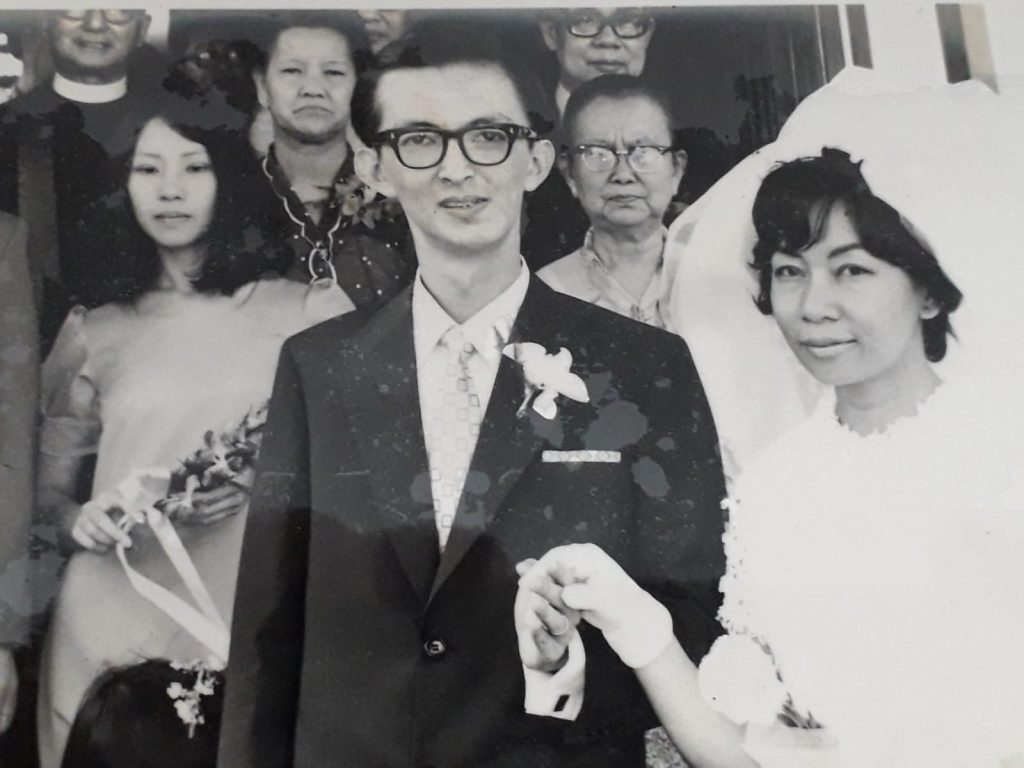
The pull of missions was so strong that Hoe Peng resigned from his job, and in August 1971, joined DTC in preparation for the field. But it was not without struggles.
One challenge was securing financial support to work overseas as a missionary. Hoe Peng recalls: “My church pastor in Singapore did not encourage missions in those days. He said that we needed more graduate leaders at home. My mother was also against the idea of my serving overseas. I remember her saying to me: ‘Your brother is already a pastor. Why must you do overseas missionary work? You can serve God here, like your father did.’ When she said that, I felt very guilty as she had already sacrificed so much for my brother and me.
“After our father died when I was 13, our mother carried the burden of running his business. She had paid for my studies overseas, in addition to supporting my elder brother who attended Trinity Theological College here in Singapore. I prayed about whether to remain in DTC and continue to break my mother’s heart, or leave and return to office work and get married. I discerned that I should leave, and did so halfway through the two-year course.”
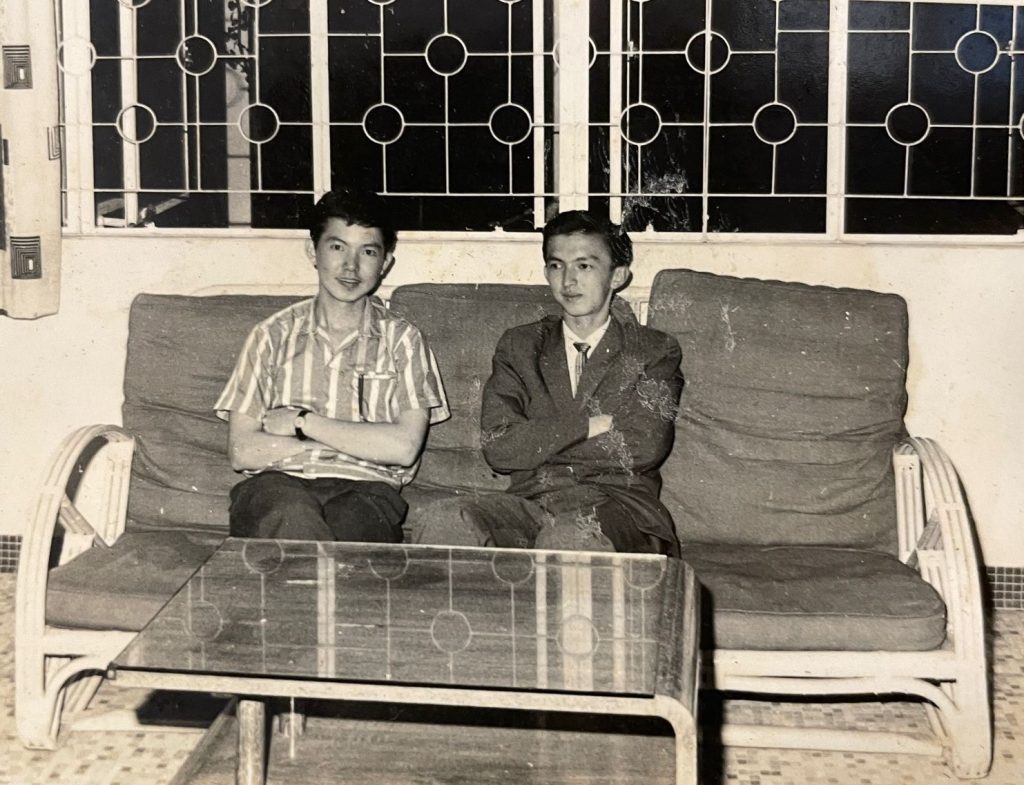
Charting His Own Course in Faith
Hoe Peng’s boss welcomed him back to his old job at Ang Kheng Leng & Associates.
However, in 1976, Hoe Peng left the security of this job and started his own architectural practice. It allowed him to take time off for occasional committee meetings and a few short trips for missions that he was starting to get involved in. It also allowed him to run his company according to Christian values close to his heart.
It was a bold step of faith.
“I ventured out with just one residential project that my ex-boss graciously passed to me and one other prospective industrial project. I began with only two staff. I asked Jesus for new work.”
The following month, another contractor recommended Hoe Peng to another job.
“How could I survive unless the Lord had a hand in it? I saw His grace and mercy through His provision. As the Lord gave new works to me, I gave back to His work in the local church and missions through my time and resources,” said Hoe Peng.
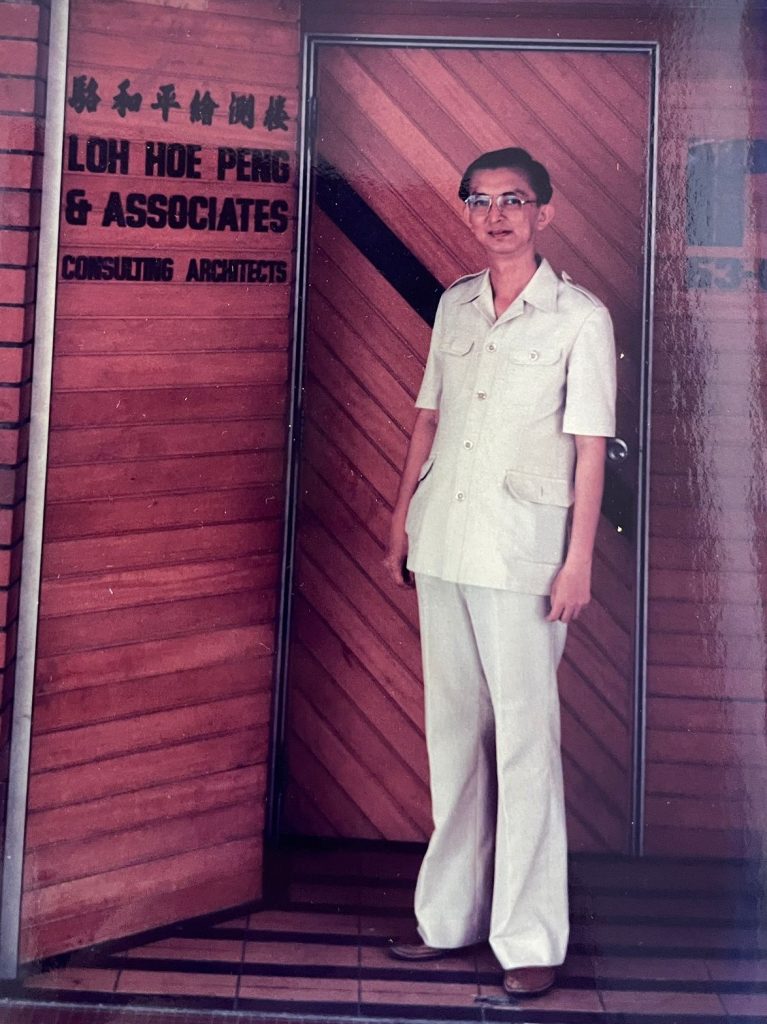
Over the years, these works included contracts for different building projects: new and renovation works of educational, residential, industrial and religious buildings.
God blessed Hoe Peng’s business as he blessed others. For example, when the Singapore arm of Sudan Interior Mission7 (SIM) needed a rent-free office, Hoe Peng gave them a corner in his expanded office.
As both organisations grew, God provided the resources in 1987 for them to have separate offices.
“Busybody” in armchair missions
Armchair missionaries like Hoe Peng were involved in planning, raising funds, deploying resources and personnel into the field, and providing care and practical support for missionaries.
Hoe Peng helped found and served in committees of some mission groups within and outside of Wesley. They included Campus Crusade, the Gideons and Methodist Missions at local and national level. Hoe Peng was also in the founding committee of Singapore Centre for Evangelism and Missions (SCEM)8.
“At that time few professionals would avail themselves to serve in missions committees,” said Hoe Peng, explaining how he became Chairman of a few of them.
He also went on short-term mission trips to Indonesia and the Philippines in the 1980s to explore more effective missions partnerships with Methodist leaders.
“By being a ‘busybody’ in missions, I kept myself updated on the needs of mission field partners,” said Hoe Peng.
“God used all these little bits of involvement to remind me of the great need for His love worldwide.”
First steps in South America
In the 1980s, the door finally opened for Hoe Peng to visit South America often when he represented SIM East Asia at annual international board meetings in the USA.
He set foot for the first time in Bolivia in 1984, and subsequently, visited the country every few years. There, he was able to see firsthand the country and the realities and struggles of the people whom the missionaries were ministering to.
“I met a faithful lady missionary who had an open house for students to drop in or stay. She had taken under her wing a bright medical student. This student couldn’t graduate for nine years because university courses were often disrupted by frequent strikes or social turmoil.
“I also saw the fruits of this missionary’s labour. A few of the female students she hosted graduated and went on to marry pastors and assisted in their missions work in practical ways.”
In 1986, Hoe Peng was invited to represent Singapore at what was known as the World Evangelical Alliance (WEA). Later that year, being a part of the WEA committee, Hoe Peng travelled to Sao Paulo, Brazil to attend the first COMIBAM, or Commission of Ibero America as it was known.
On this trip, he visited a huge missions training facility called Valley of Blessings. It was established by seven business friends who had bought hectares of land, half of which was given to a missions body called “The Antioch Missions”. The friends then developed the other half of the land for housing.
“It opened my eyes to how business people can invest and be partners in missions. It was a great example of a tent-making ministry. As the Lord prospered the developers, they gave to other mission projects.
“It reminded me that Christian missions can be an investment with high yields—both for business and missions and spiritually in new lives for His Kingdom,” said Hoe Peng.
Through this same conference, Hoe Peng also met a young Brazilian couple who was interested in China missions.
“The man had grown up living in cardboard shelters as a street kid. But he had the opportunity to go to school where he topped his classes, achieved double promotions and scholarships. While in university, he met the Lord while reading a Bible. He became a nuclear fission physicist, and he went on to bless others just as the Lord had blessed him.
“Through these meetings, God was showing me the fruits of missions. It also allowed me to encourage other professionals that they could also go and be fruitful in ministry,” said Hoe Peng.
Is it time?
Now that Hoe Peng had seen the work in South America and met the people involved, he started to ask God: “Is it time?”
There was continued yearning to serve God in Bolivia, even after he became a grandfather in 2004. However, in May 1994, Hoe Peng was hit by a double whammy when he lost two persons precious to him: his beloved mother and beloved mentor David Adeney both passed away within two weeks of each other.
“I was spiritually devastated,” said Hoe Peng. It prompted him to evaluate his current state.
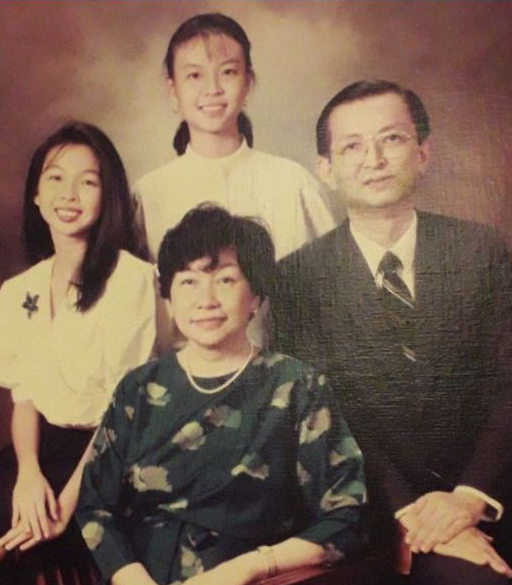
“I was happy and yet not happy with architectural work,” he admitted. “Our two daughters were still in university then. We could not just pack up and go into the mission field. I asked God, ‘God, how do I resolve this soon?’”
In 1996, Hoe Peng was the missions chair in inking a covenant for Wesley to serve a certain people group in East Asia.
“When a church member suggested that I go and serve these people, it jolted me to ask ‘Lord, is it time now?’ But obviously it wasn’t because I still had many unfinished building projects, and I couldn’t break the trust my clients had in me. At that point, the hymn Trust and Obey came into my mind. I realised that I needed to slowly wind down my architectural practice if I wanted to go overseas. This meant that I would have to bite the bitter pill and only take on manageable new jobs while I completed a church building project which dragged on past the normal project duration. I still had overheads to pay even if I were to downsize the business. It was a challenging time, and it tested my faith. But God provided.”
For Hoe Peng, it was a period of submission to Christ to provide a smooth transition to winding down his practice.
It’s time
In 2002, Henry Cheah, a Malaysian missionary in Bolivia—who has been partially supported by Wesley—came to stay with Hoe Peng and Alice. He encouraged Hoe Peng to take the big leap.
“Henry told me, ‘There is much work to be done in Bolivia, Hoe Peng. But the labourers are few.’ I sensed that God had confirmed my plan to stop my architectural practice. And I told my staff my intention to close the office. However, the Lord counselled me through a friend from DTC who advised, ‘Hoe Peng, you should not rush.’”
The following year, Alice’s father passed away. But the Lohs still needed to be around to care for her mother as Alice’s sister, Helen, was not due back from short-term mission field work until June 2005.
“So we took it that God wanted us to wait and take more time to complete ‘the things of this world’ and more importantly, to clarify details for our intended field ministries,” said Hoe Peng.
“These extra months became a worthwhile period of learning new things from God.”
Ministry-wise, they looked at various options like children-at-risk. Hoe Peng restudied materials from Navigators on discipleship and discipling others. Alice had time to complete her Bible Study Fellowship (BSF) course and to acquire some children’s ministry tools.
In December 2004, Aldo Cayuba, a Bolivian friend, contacted Hoe Peng. “Come over and join us in our new urban ministry in Cochabamba.”
Again, it was all God’s timing and provision. Henry knew Aldo, but this was the first time he was hearing about this ministry called Christ for the City International (CFCI).9
“I knew it was now or never!” said Hoe Peng, as concerned friends asked them, “‘Are you sure you can go at such an old age?’”
Wesley Methodist Church supported Hoe Peng in the ministry.
“I didn’t know exactly what I was going to do when I got to South America. But it was trusting that God would lead,” he said.
Finally!
Hoe Peng and Alice left for Bolivia after their third grandchild was born. Coincidentally, this grandson was born on Bolivia’s National Day, 6 August 2005.
“This journey changed my life from church building in Singapore to church planting in Bolivia, and from armchair missions to actually being in the mission field, facing culture shocks as a rookie missionary,” he said.
Their life in Bolivia began by adjusting to the altitude and learning Spanish. Cochabamba, located in the foothills of the Andes mountains, is about 2,500m above sea level.
“Thank God Alice and I were kept safe from strikes and unrest in the city,” said Hoe Peng.
The Lohs initially shared a home with Henry. The home was also used by CFCI for the training of missionaries and teaching purposes. On Sundays, it was used as a place of worship for the church that Henry started.
Hoe Peng was assigned to work with students of intervarsity fellowship Comunidad Cristiana Universitaria (CCU) at Universidad de San Simon.
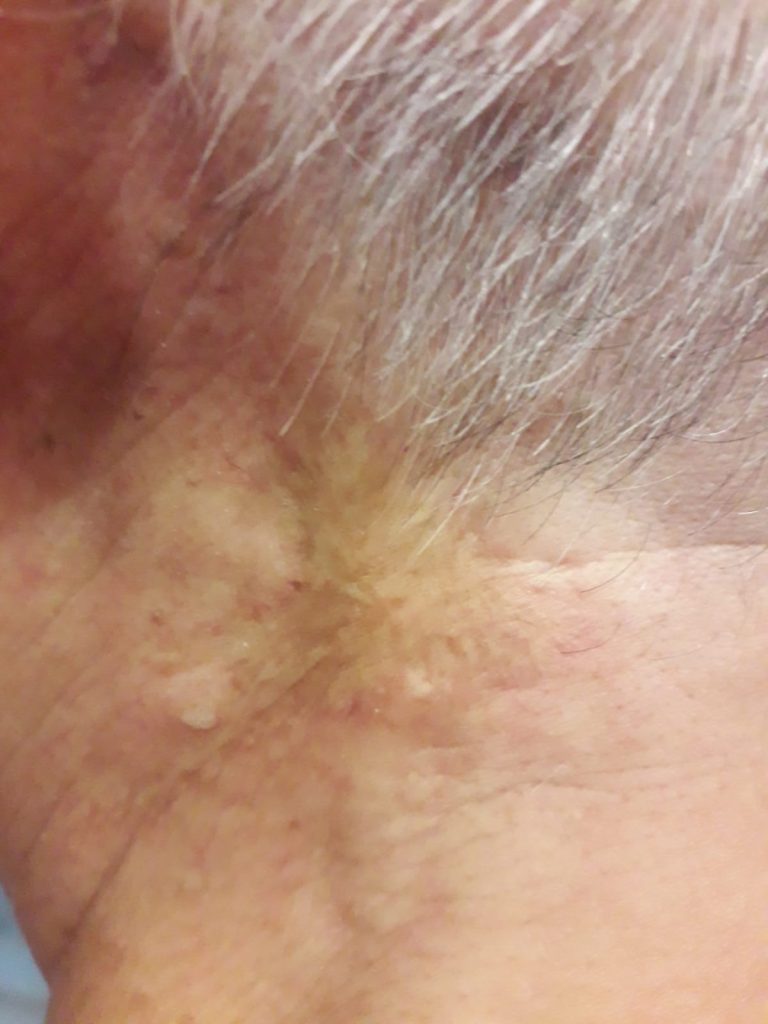
“We decided to start a coffeehouse outreach—Café El Faro (Lighthouse Café)—and to help train the Christian students for personal evangelism. The idea was that students with their interested friends can adjourn to CCU ministry office nearby for further follow-up. After I agreed to the set-up costs, I left the meeting feeling guilty that I had committed to such a large sum of money. I asked myself, ‘Why did I do that? Where is the money coming from?’”
When Hoe Peng reached home and opened his computer, there was an email from the Wesley missions committee in Singapore.
“It read, ‘Hoe Peng, God must be blessing your work. Someone just gave you a large sum of money.’ This came to almost half the sum of money I had committed to the project. This biggest one-time giving to a Wesley missionary by an individual was a confirmation that the Lord was blessing our work,” said Hoe Peng.
The same donor also gave a similar sum to Henry. They had no idea who she was.
“She was like an angel,” recalled Hoe Peng.
Much later, when Hoe Peng and Alice returned to Singapore, they managed to meet the “angel” to thank her in person. It was the one and only time they saw her.
“She said that God had blessed her in business, and she wanted to be a blessing in return. She chose us from a list of 20 missioners listed in our church’s Sunday bulletin,” recalled Hoe Peng in wonder.
Besides selling drinks, Café El Faro (The Lighthouse Café) quickly drew students in with its low-cost table football and internet terminals. Occasionally, music performances were held there.
“The idea was to reach out and befriend the students, and later disciple them,” said Hoe Peng.
Outside of this ministry, Hoe Peng also had the opportunity to mentor a young architect couple by exposing them to design ideas not available to them at that time, as well as by praying for their walk with Jesus.
Ministering to the fatherless
Meanwhile, Alice worked at Mosoj Yan10 (which means “new road” in the Quechua language), a ministry that looked after latchkey children who would otherwise be playing around the streets while their single mothers sold things at the market.
“This ministry possibly kept the kids safe from the clutches of child traffickers who are rampant in South America,” said Hoe Peng.
In the safety of Mosoj Yan, the children were given a shower, lunch, reading lessons and then, time to indulge in fun and games.
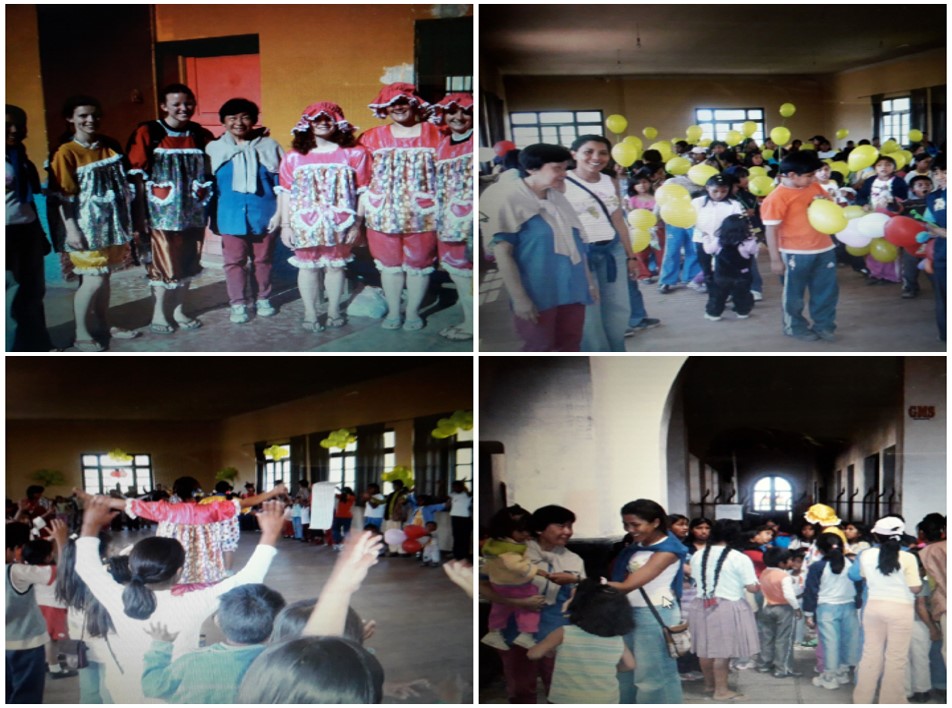
There, Alice and other volunteers had the opportunity to introduce them to the ultimate Heavenly Father.
“Alice told me, ‘Many of these children did not know their fathers who had disappeared from their lives. One boy I spoke to could not bring himself to mention father in his prayer,’” said Hoe Peng.
Hoe Peng had the experience of going into the semi-jungle to visit mission colleagues who were ministering to the Yuqui tribe by bringing basic education and doing health checks on the children.
“The tribe was living in poverty, with a few of them sleeping literally on the bare ground,” he said.
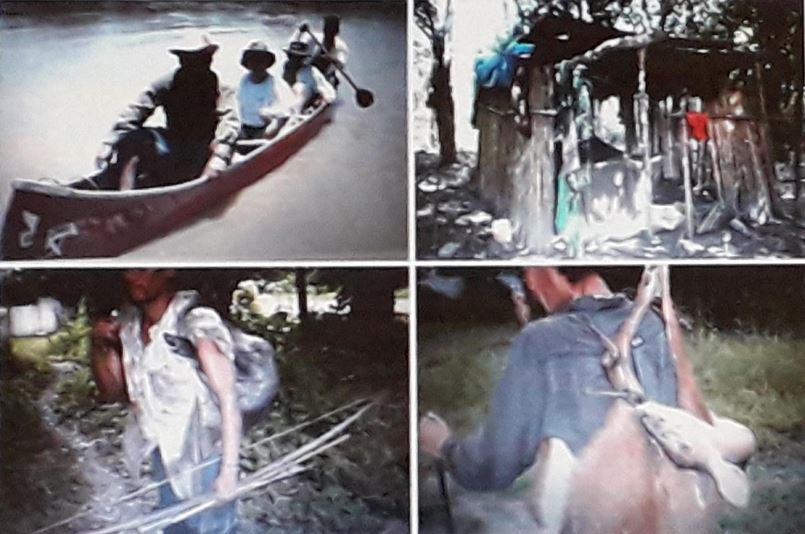
Hoe Peng was bitten by mosquitoes over the two nights he was there. He was in pain and covered in sores when he returned to Cochabamba, but unable to get medical help as all the clinics were closed that day. He spent that night alone at home as Alice had returned to Singapore for the birth of their youngest grandson.
“I drank a lot of water and cried to God for help. I sent SOS emails to friends, asking them to pray for me. I had little sleep that night. But overnight, the sores disappeared miraculously. God had heard the prayers of my friends in Singapore. Praise the Lord!”
Homecoming
After three years of serving in Bolivia, the Lohs returned to Singapore in 2008 because of medical reasons and also because Alice missed their young grandchildren. “It was really by God’s grace that we ventured out from church building to church planting, and from armchair missions to being in the mission field in this blessed period of the last lap of our lives towards the winning post. Our going and stepping out does not depend on our age. If God calls you to serve, He will provide you with the strength and the resources,” said Hoe Peng.
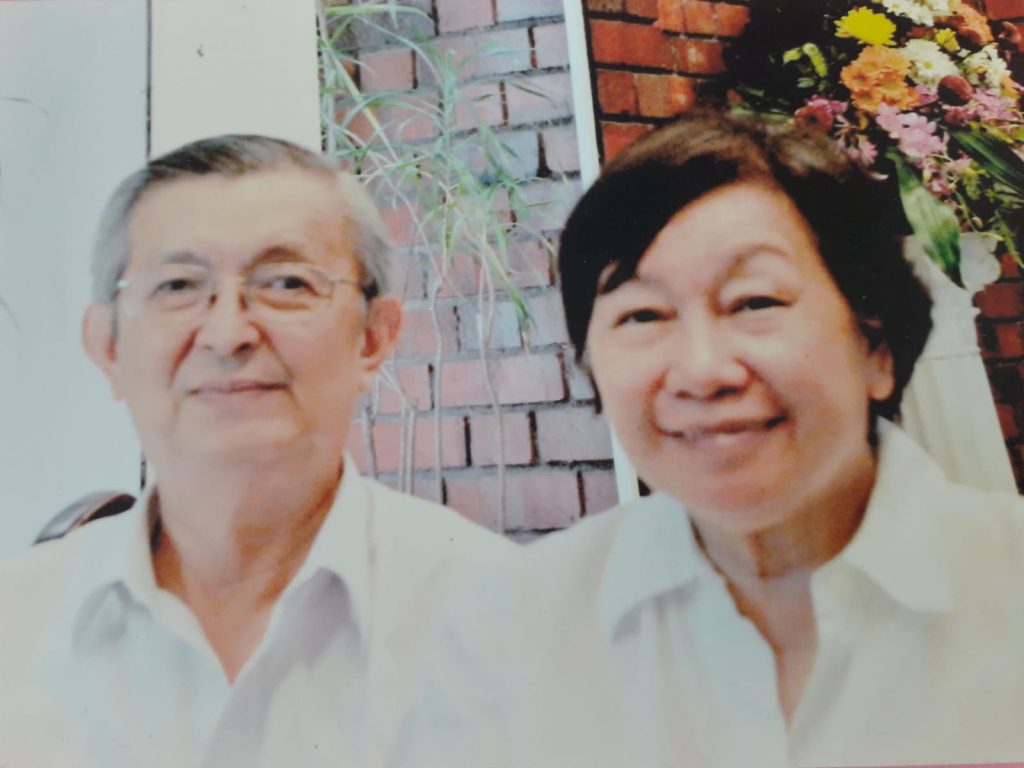
His parting shot? The verse that was on his mind when SIM in Singapore was established, is the same verse given to him by the CFCI International Director in the USA, when he accepted Hoe Peng and Alice’s applications to join their missions work in Bolivia.
1 Thessalonians 5:24 has been Hoe Peng’s anchor, and one he would like to leave with us: “Faithful is He who calls you, and He also will do it.“ (NASB)

